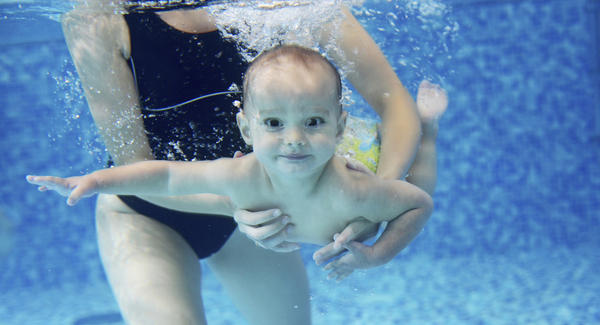As a parent, introducing your kids to swimming and water safety in general is one of the most important and indeed challenging processes you’re ever likely to face. While some kids simply cannot wait to get in the water and seem to instinctively have impressive swimming skills, others have considerably less confidence and desire to get wet. In any and all cases, however, it’s important to remember that the way you go about both the introduction to water and the teaching of swimming skills will have a serious impact on the child’s development going forward.
As far as the experts are concerned, it’s crucially important to know what not to do along the way in terms of bad teaching habits. So with this in mind, what follows is a brief introduction to just a small selection of common mistakes made by parents when teaching their kids how to swim:
Not Having the Right Gear
First up, you cannot expect your kids to make strong and rapid progress if they are not provided with the necessary gear and accessories. From water wings to rubber rings to baby boys’ and baby girls’ swimming costumes, providing them with the right tools for the job is of the utmost importance. With substandard gear or no appropriate gear at all, their progress and enjoyment will suffer.
Making the Whole Thing a Chore
Speaking of suffering, quite often the very worst thing any parent can do when it comes to teaching a child to swim is to give the impression that the whole thing is less of a pleasure and more of a chore. There will be challenges along the way and you can’t expect it to be smooth sailing from start to finish, but the moment your child stops seeing the process as fun and enjoyable, chances are they will lose interest and their progress will come to a grinding halt. Even if it means having to put on a bit of an act, try to show them you’re having an amazing time from start to finish.
Trying to Force Them Into the Water
Another highly common mistake is that of taking a rather too heavy-handed approach when it comes to encouraging timid kids into the water. You know there’s nothing to be afraid of and you also know that your child will realise this just as soon as they actually get into the water. Nevertheless, it is a terrible idea to physically force them into the water or quite literally throw them in at the deep end. The last thing you want is to traumatise them in a manner that will then lead to them associating swimming lessons with something unpleasant.
Assuming Your Child Can Handle Lessons at Your Chosen Pace
You’ll probably have a rough idea in mind when it comes to what you will teach a child and when you will teach it to them. However, having any kind of timescale in mind is generally a very bad idea as all kids pick up and develop swimming skills at different speeds. It is therefore important to modify and tailor the lessons you give your child in accordance with the unique pace at which they learn. Don’t make any assumptions in terms of how quickly they will pick things up, but rather encourage them to develop at their own pace.
Setting Standards or Overly Ambitious Targets for Your Child
In exactly the same vein, setting overly ambitious targets or goals that are far too challenging is never a good idea. Just in the same way that reaching goals can be satisfying, not being able to reach targets that were set too high in the first place kills motivation and harms confidence. As such, rather than assuming that your child will pick up any specific skills by any specific date, simply go with the flow and reward their achievements along the way.
Making Them Fear the Water
Last but not least, be very aware of the fact that if you give your child any kind of reason to fear the water or be uncomfortable with it, you’ll make the whole process much more difficult. For example, if your child accidentally swallows a big mouthful of pool water, don’t freak out and make them think they have just guzzled down a huge dose of poison. It’s all about communicating the importance of water safety while at the same time not making your child think that water is something to be terrified of. It’s a tricky balancing act to pull off but one that is important nonetheless. Teaching your child to swim should be a fun experience for both parent and child and following these tips will hopefully make this journey more enjoyable for both of you.

